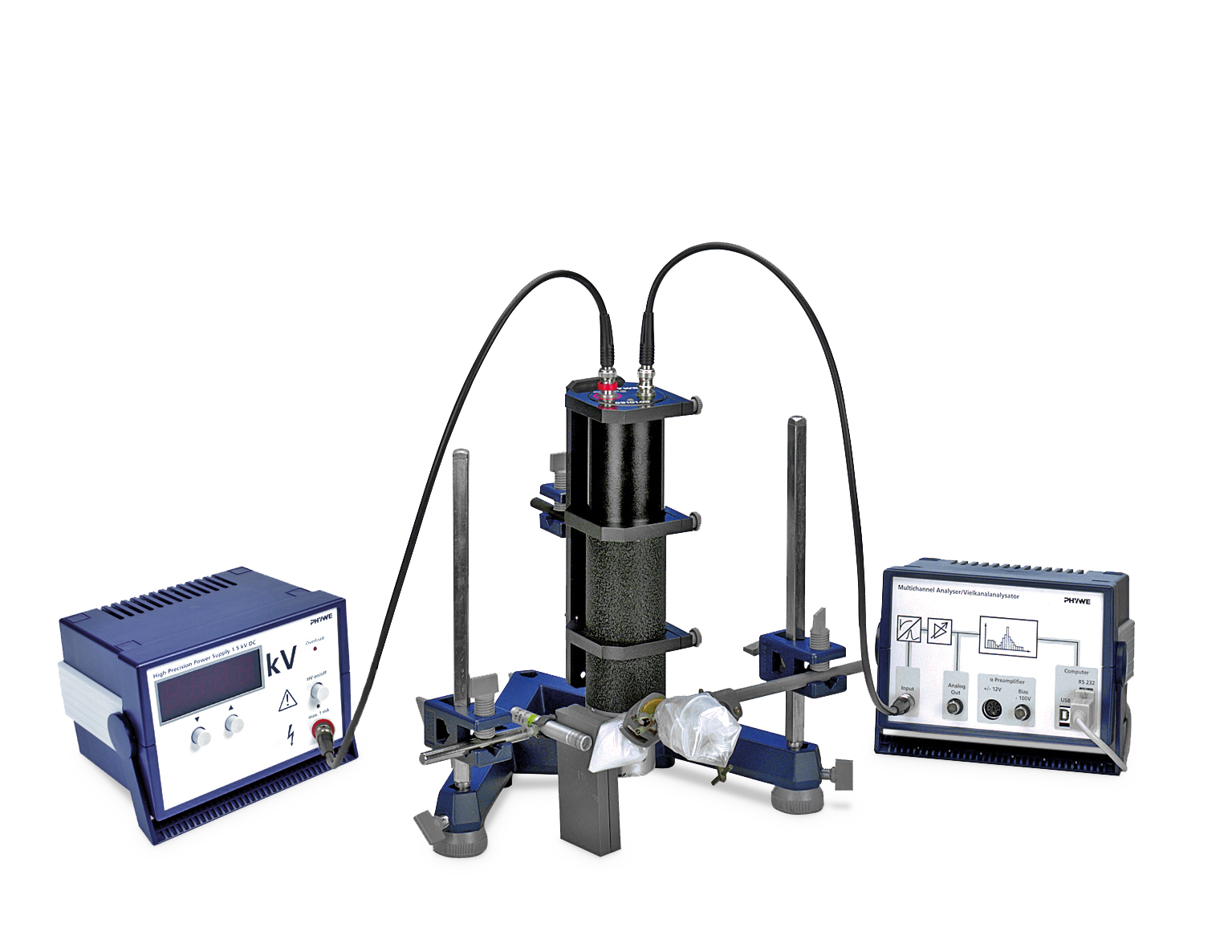Principle
The irradiation of iodine, barium (sulfat), silver and tin with soft gamma-radiations gives rise to Ka radiations characteristics of these elements. The X-ray spectra are recorded with a gamma spectrometer consisting of a scintillation counter, a pulse height analyser and a recorder. After calibration of the spectrometer, the Rydberg constant is determined from the energies of the X-ray lines, using Moseley's law.
Benefits
- A high ranking nuclear physics experiment can be performed by students within some hours
- The combination of multichannel analyzer (MCA), gamma detector and high precision HV power supply leads to precise results
- Fundamental Rydberg's constant and Mosley's law are easily determined
Tasks
- Calibration of the gamma-spectrometer in the low energy range, using the Ba-resonance line Cs-137 emitter (32 keV) and the gamma-line of 241 Am at 59.6 keV.
- Recording of the X-ray fluorescence spectra (Ka-lines) of different elements and determination of the corresponding energies.
- Plotting of the measured X-ray energies according to Moseley's law against (Z-1) 2 and determination of the Rydberg constant R; from the slope of the resulting lines.
Learning objectives
- Binding energy
- Photoelectric eftect
- Shell structure of electron shells
- Characteristic X-ray radiation
- g-spectrometry
- X-ray spectral analysis


